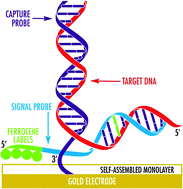Electrochemical biosensors
Abstract
Electrochemical biosensors combine the sensitivity of

* Corresponding authors
a
Department of Chemistry, Benedictine University, 5700 College Road, Lisle, USA
E-mail:
NRonkainen@ben.edu
Fax: +1 630 829 6547
Tel: +1 630 829 6549
b
Department of Chemistry, University of Cincinnati, P.O. Box 210172, Cincinnati, USA
E-mail:
brian.halsall@uc.edu, william.heineman@uc.edu
Fax: +1 513 556 9239
Tel: +1 513 556 9274
Electrochemical biosensors combine the sensitivity of

 Please wait while we load your content...
Something went wrong. Try again?
Please wait while we load your content...
Something went wrong. Try again?
N. J. Ronkainen, H. B. Halsall and W. R. Heineman, Chem. Soc. Rev., 2010, 39, 1747 DOI: 10.1039/B714449K
To request permission to reproduce material from this article, please go to the Copyright Clearance Center request page.
If you are an author contributing to an RSC publication, you do not need to request permission provided correct acknowledgement is given.
If you are the author of this article, you do not need to request permission to reproduce figures and diagrams provided correct acknowledgement is given. If you want to reproduce the whole article in a third-party publication (excluding your thesis/dissertation for which permission is not required) please go to the Copyright Clearance Center request page.
Read more about how to correctly acknowledge RSC content.
 Fetching data from CrossRef.
Fetching data from CrossRef.
This may take some time to load.
Loading related content
